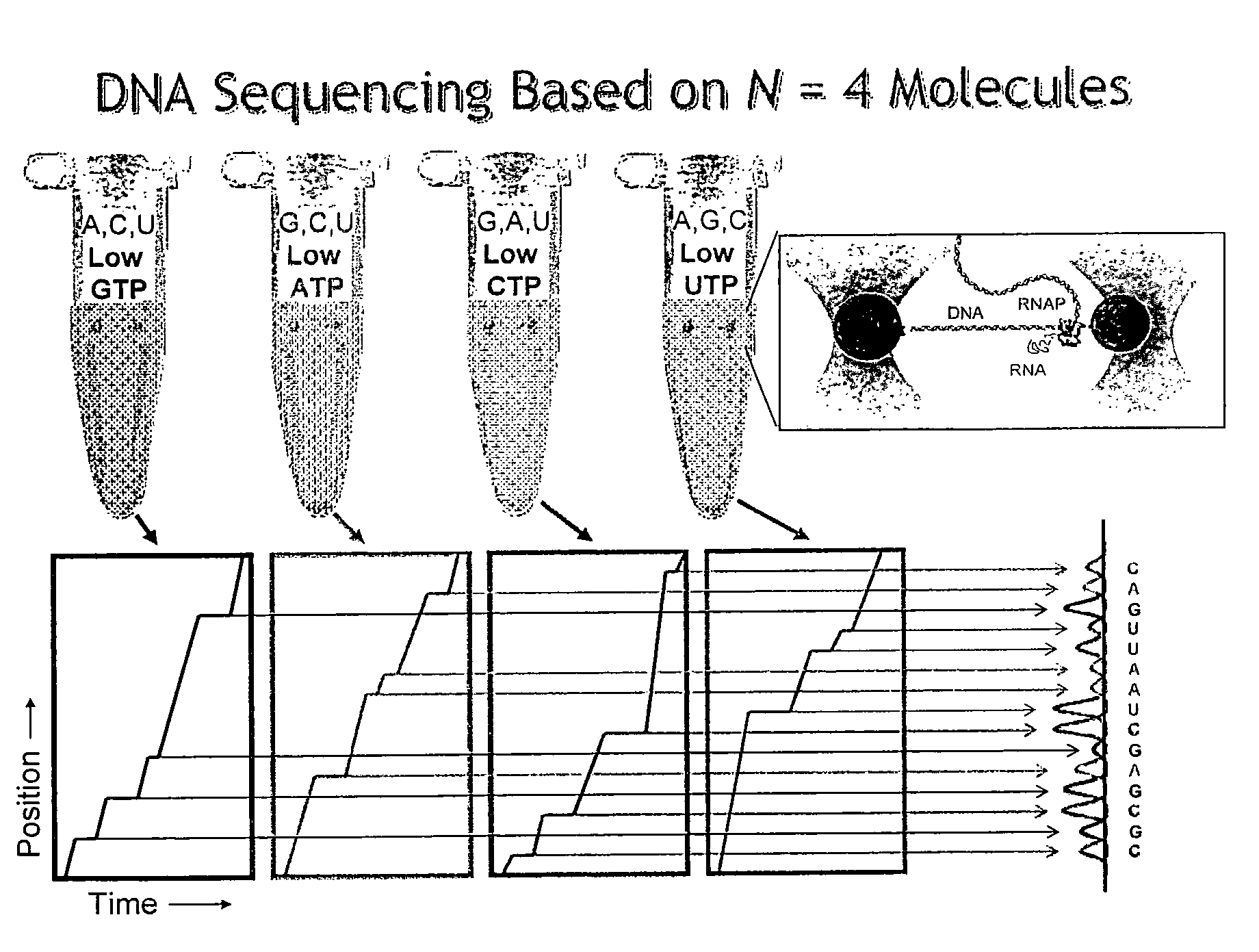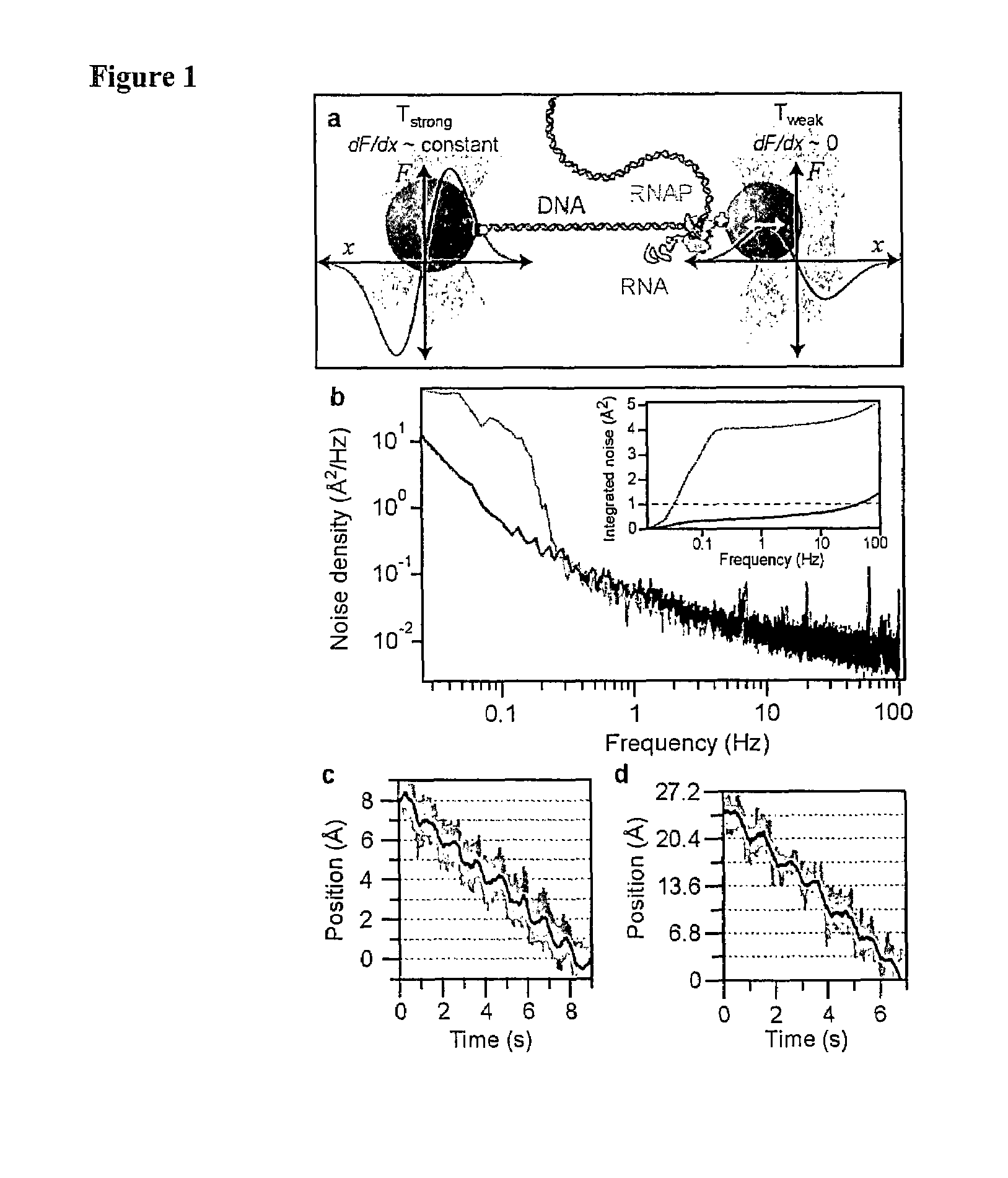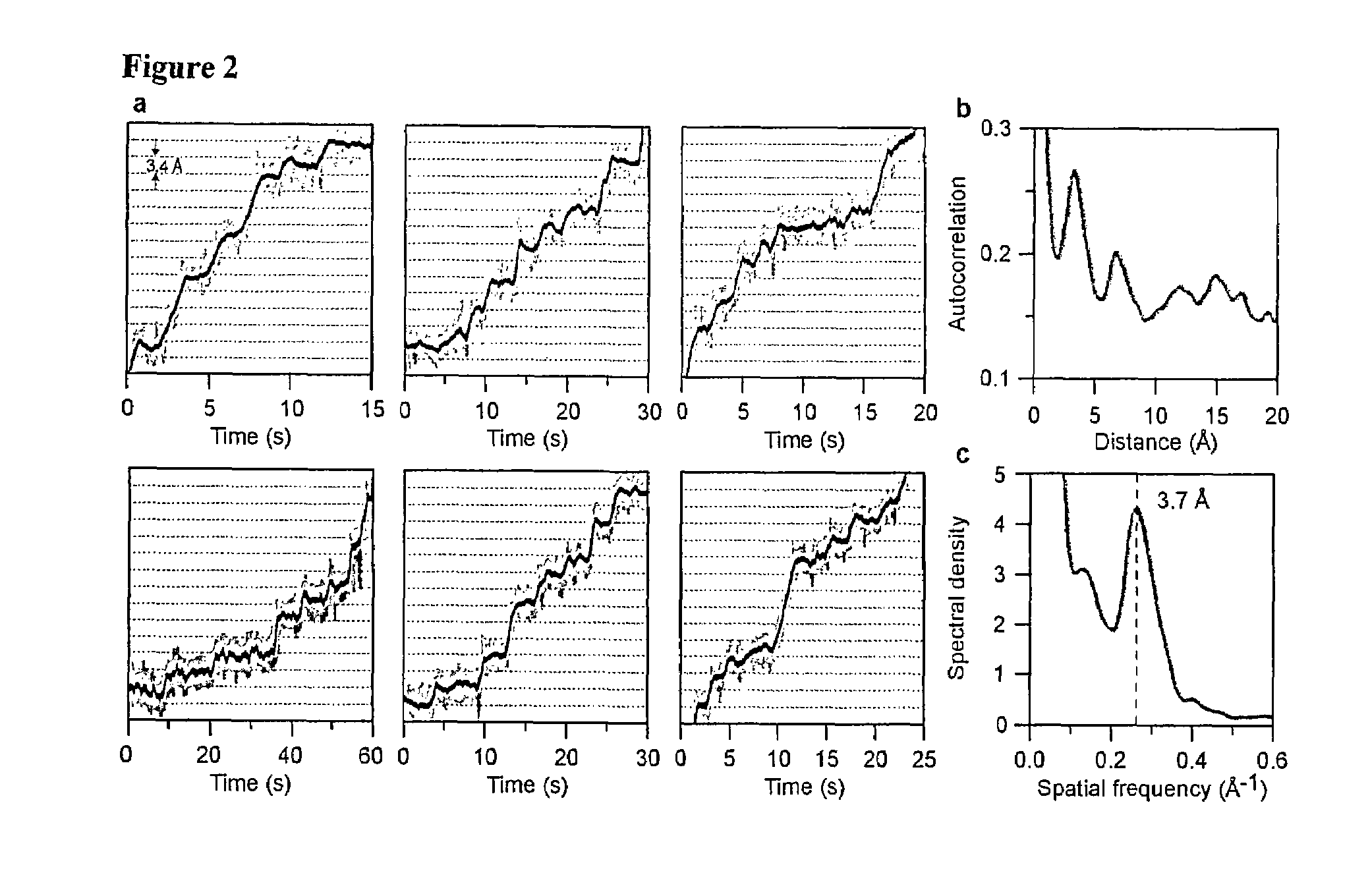Motion resolved molecular sequencing
a molecular and motion-resolved technology, applied in the field of motion-resolved molecular sequencing, can solve the problems of high data density of dna, fragment sizing, and inability to demonstrate the resolution and chemical specificity needed simultaneously, and achieve the effect of zero stiffness
- Summary
- Abstract
- Description
- Claims
- Application Information
AI Technical Summary
Benefits of technology
Problems solved by technology
Method used
Image
Examples
example 1
Direct Observation of Base-Pair Stepping by RNA Polymerase
[0069]During transcription, E. coli RNAP translocates along DNA while following its helical pitch, adding ribonucleoside triphosphates (NTPs) successively to the growing RNA. The basic reaction cycle consists of binding the appropriate NTP, incorporation of the associated nucleoside monophosphate into the RNA, and release of pyrophosphate. In addition to following the main reaction pathway, RNAP can reversibly enter any of several off-pathway paused states. For example, RNAP may backtrack by several bases along DNA, displacing the RNA 3′-end from the catalytic centre and temporarily inactivating the enzyme. Paused states complicate the interpretation of biochemical studies of RNAP elongation because these kinetic measurements convolve on- and off-pathway events into overall rates. The resolution of individual enzymatic turnovers would be especially helpful in unraveling the behavior of complex reaction cycles for enzymes such...
example 2
A Passive all-optical Force Clamp for High Precision Laser Trapping
[0079]Here, we introduce a simple approach that operates passively by taking advantage of the anharmonic region of the trapping potential. As displacement from the center of the trap increases, force initially increases linearly (i.e. constant positive stiffness), then rolls over upon reaching a maximum and decreases to zero in the region outside the trap. Near the peak of the force-displacement (F-x) curve, there exists a region where the force is approximately constant for small displacements (i.e. zero stiffness). An object that is pulled into this region is effectively force-clamped, in the sense that the optical force acting on it does not vary with displacement. The load applied by such a force clamp can be set to the desired value simply by adjusting the intensity of the laser light.
[0080]Our instrument uses two 1064 nm trap beams with orthogonal linear polarizations produced by a single Nd:YVO4 laser, whose p...
example 3
Sequencing a DNA Oligonucleotide
[0085]Stalled complexes and avidin-coated 600 nm-diameter polystyrene beads were prepared as described by Neuman et al. (2003) Cell 115, 437-447. Polyclonal anti-digoxigenin antibody was covalently attached to carboxylated 730-nm diameter polystyrene beads (Bangs Labs) via an EDC / Sulfo-NHS coupled reaction. RNAP was stalled 29 base pairs after the T7A1 promoter on a template derived from the rpoB gene of E. coli.
[0086]A bead-RNAP-DNA-bead dumbbell of ˜6000 bp total double stranded DNA was constructed by binding a small 600 nm diameter polystyrene bead to a biotin tag located on the β′ subunit of a stalled E. coli RNAP transcription elongation complex, and a larger 730-nm-diameter bead to the downstream end of the DNA template using a digoxygenin antibody to couple to a digoxygenin molecule incorporated into the 5′ end of the DNA.
[0087]Each of the two beads of the dumbbell was held in a separate optical trap as described in Example 1, 1 μm above the c...
PUM
| Property | Measurement | Unit |
|---|---|---|
| tension | aaaaa | aaaaa |
| diameter | aaaaa | aaaaa |
| diameter | aaaaa | aaaaa |
Abstract
Description
Claims
Application Information
 Login to View More
Login to View More - R&D
- Intellectual Property
- Life Sciences
- Materials
- Tech Scout
- Unparalleled Data Quality
- Higher Quality Content
- 60% Fewer Hallucinations
Browse by: Latest US Patents, China's latest patents, Technical Efficacy Thesaurus, Application Domain, Technology Topic, Popular Technical Reports.
© 2025 PatSnap. All rights reserved.Legal|Privacy policy|Modern Slavery Act Transparency Statement|Sitemap|About US| Contact US: help@patsnap.com



